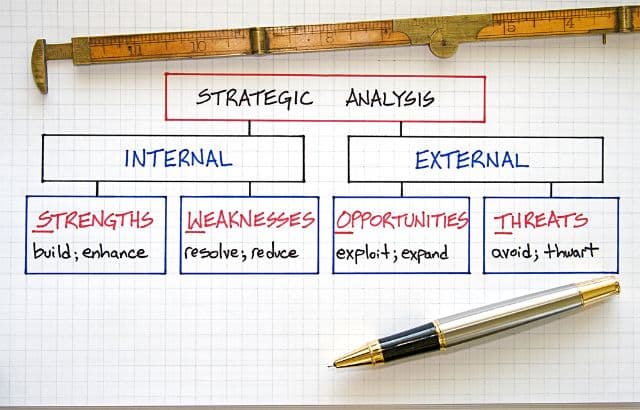SWOT analysis is a powerful strategic planning tool vital for the health care sector. It systematically evaluates an organization’s strengths, weaknesses, opportunities, and threats. This process helps health care businesses gain valuable insights into their operations.
By identifying internal capabilities and challenges, organizations can better understand their position. They can also recognize external factors that impact success. The health care industry is rapidly changing due to technology, regulatory shifts, and evolving patient needs.
Conducting a SWOT analysis is essential in this environment. It empowers organizations to make informed decisions and enhance strategic planning. Ultimately, this leads to improved patient outcomes and operational efficiency. Leveraging SWOT analysis can provide a competitive edge and support sustainable growth.
Table of Contents
Analysis in Health Care Business – Identifying Strengths

SWOT analysis begins by identifying and evaluating the internal strengths of a health care the community, or innovative services. By recognizing and leveraging these strengths, healthcare organizations can build on their competitive advantages, enhance patient satisfaction, and establish a solid foundation for growth.
Addressing Weaknesses

No organization is without its weaknesses, and the healthcare sector is no exception. Whether it’s outdated infrastructure, inefficient processes, or workforce challenges, identifying weaknesses is a critical step toward improvement. analysis enables health care businesses to acknowledge these shortcomings and develop strategies to address and mitigate them. By addressing weaknesses, organizations can enhance operational efficiency, reduce costs, and ultimately improve the quality of patient care.
Analysis in Health-Care Business – Capitalizing on Opportunities

The healthcare industry is dynamic, with new opportunities emerging regularly. analysis helps health care businesses stay attuned to external factors that could positively impact their operations. Opportunities may include advancements in medical technology, changes in healthcare regulations, or the potential to expand services into underserved markets. By recognizing and capitalizing on these opportunities, health care organizations can stay ahead of the curve, drive innovation, and position themselves for long-term success.
Mitigating Threats

Threats in the healthcare industry can range from regulatory challenges and changes in reimbursement policies to the emergence of new competitors or public health crises. SWOT analysis empowers businesses to identify and assess potential threats systematically. Once identified, organizations can develop strategic plans to mitigate these threats, ensuring resilience and sustainability in a rapidly changing environment.
Enhancing Strategic Decision-Making

SWOT analysis provides a holistic view of a medical management business’s internal and external factors, facilitating more informed and strategic decision-making. Leaders can use the insights gained from the analysis to prioritize initiatives, allocate resources effectively, and set realistic goals. This structured approach to decision-making enhances the overall organizational strategy and contributes to long-term success.
Frequently Asked Questions about – by Hirav Shah

What is SWOT analysis in health care?
Answer: SWOT analysis in health care is a strategic tool that identifies an organization’s strengths, weaknesses, opportunities, and threats, aiding in decision-making and planning.
Why is SWOT analysis important for health care businesses?
Answer: It helps health care businesses assess internal capabilities and external market conditions, enhancing strategic planning and competitive positioning.
How often should health care businesses conduct analysis?
Answer: Health care businesses should conduct SWOT analysis regularly, ideally annually or biannually, to stay responsive to market changes and internal dynamics.
What are the benefits of using this analysis in health care?
Answer: Benefits include improved strategic insights, better risk management, enhanced decision-making, and the ability to leverage opportunities while addressing weaknesses.
Can SWOT analysis assist in crisis management for health care organizations?
Answer: Yes, it can identify vulnerabilities and potential threats, enabling organizations to develop proactive strategies and effective contingency plans.
To perform a SWOT analysis, you don’t typically have numerical calculations but rather qualitative assessments. However, if you’re looking for a way to quantify the findings or evaluate them, here are a few approaches you might consider:
Example of Quantifying SWOT Elements
- Scoring System: Assign scores (e.g., 1-5) to each element in the SWOT analysis based on their importance or impact. For instance:
- Strengths:
- Experienced staff: 4
- Advanced technology: 5
- Weaknesses:
- Limited funding: 3
- High turnover rates: 4
- Opportunities:
- Growing patient base: 5
- New regulations favoring telehealth: 4
- Threats:
- Increased competition: 4
- Changes in reimbursement policies: 3
Total Score Calculation:
- Strengths: 4 + 5 = 9
- Weaknesses: 3 + 4 = 7
- Opportunities: 5 + 4 = 9
- Threats: 4 + 3 = 7
- Strengths:
- Prioritization Matrix: Create a 2×2 matrix to evaluate each element based on urgency and impact.
- High Impact / High Urgency: Focus immediately
- High Impact / Low Urgency: Plan for future action
- Low Impact / High Urgency: Quick wins
- Low Impact / Low Urgency: Monitor but prioritize less
- SWOT Weighting: Assign weights to each SWOT component based on strategic importance. For example, if you assign:
- Strengths = 40%
- Weaknesses = 20%
- Opportunities = 30%
- Threats = 10%
Calculate a weighted score based on your initial scoring system.
Example Calculation:
- Weighted Score for Strengths = 9 (total strength score) * 0.4 = 3.6
- Weighted Score for Weaknesses = 7 * 0.2 = 1.4
- Weighted Score for Opportunities = 9 * 0.3 = 2.7
- Weighted Score for Threats = 7 * 0.1 = 0.7
Final Weighted Score:
- Total = 3.6 + 1.4 + 2.7 + 0.7 = 8.4
These calculations help quantify your SWOT analysis, providing a clearer picture of where to focus efforts. Adjusting weights and scores based on strategic priorities can further refine your insights.
Conclusion

In the intricate and heavily regulated realm of healthcare, the utilization of SWOT analysis emerges as an indispensable tool for businesses aspiring to flourish in a competitive environment. Authored by Hirav Shah, this strategic approach involves pinpointing internal strengths and weaknesses while meticulously assessing external opportunities and threats. By undertaking this comprehensive analysis, health care organizations can systematically craft resilient strategies, amplify operational efficiency, and elevate the standard of patient care. Embracing SWOT analysis as a routine practice, as advocated by Hirav Shah, empowers health care businesses to adeptly navigate changes, sustain competitiveness, and achieve optimal outcomes for both patients and stakeholders.










